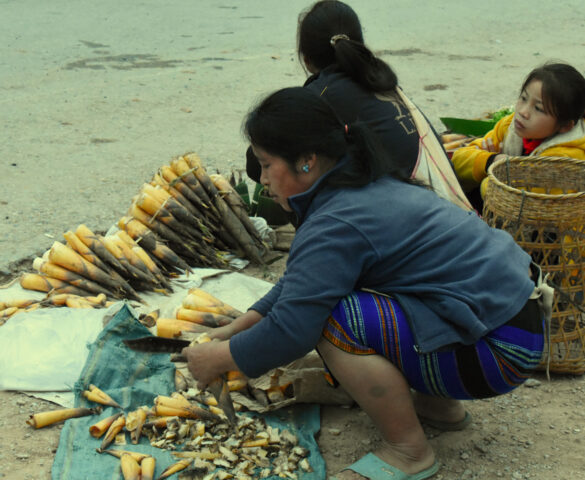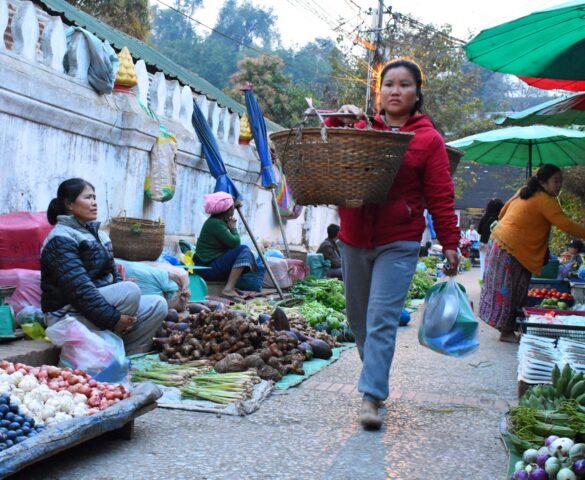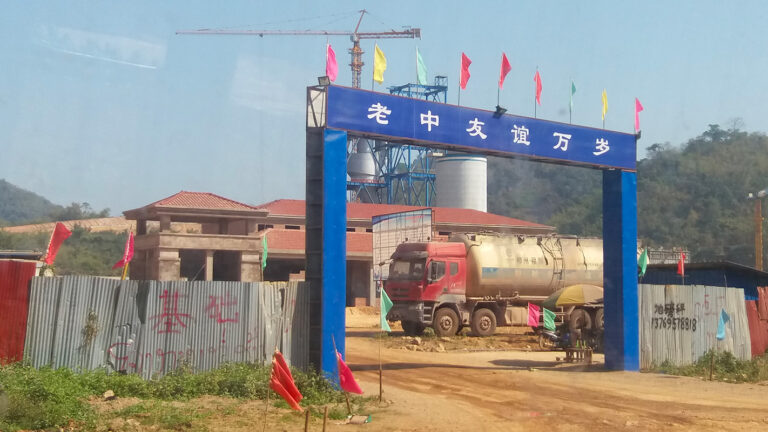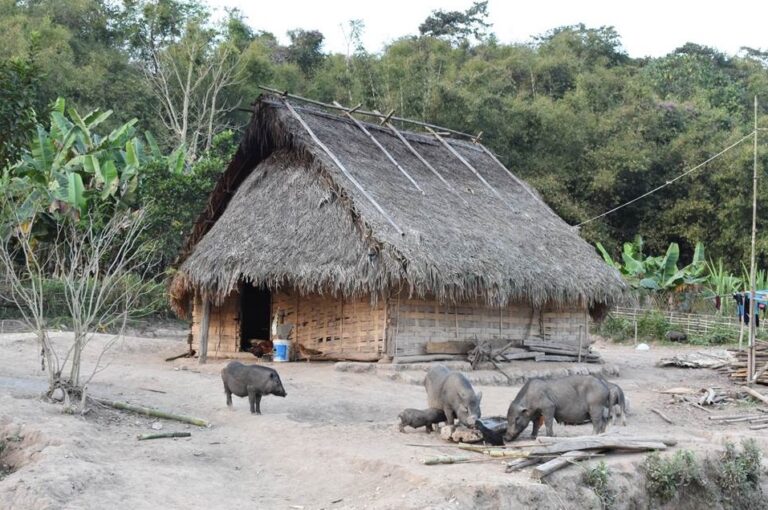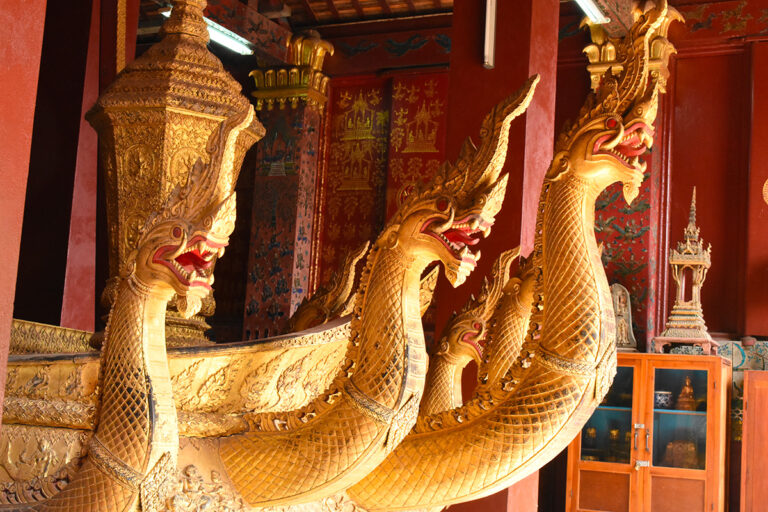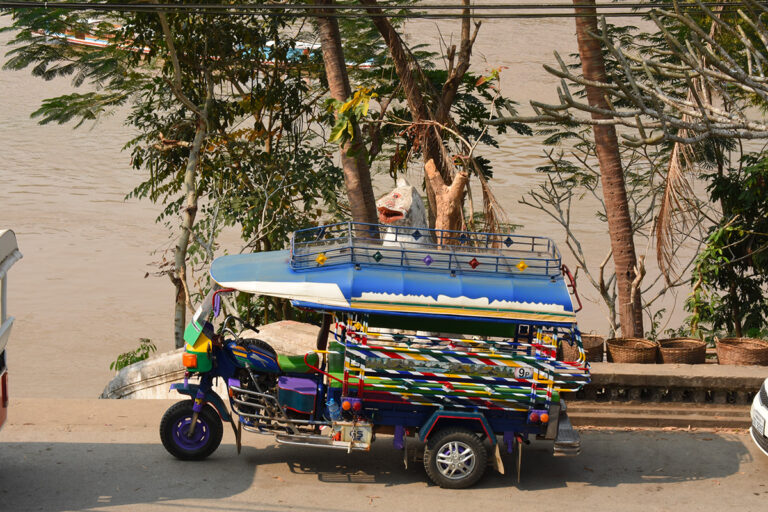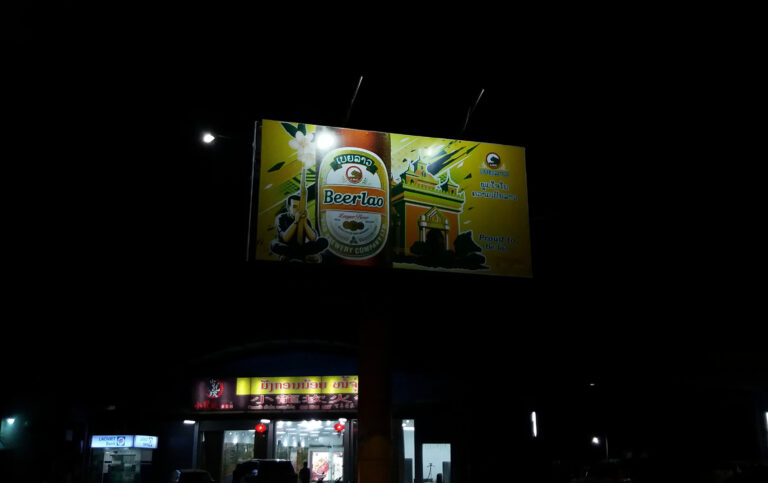
Fragments of worlds
My Fragment of Laos
Laos: The Cinderella of Indochina

Fragments of worlds
My Fragment of Laos
Laos: The Cinderella of Indochina
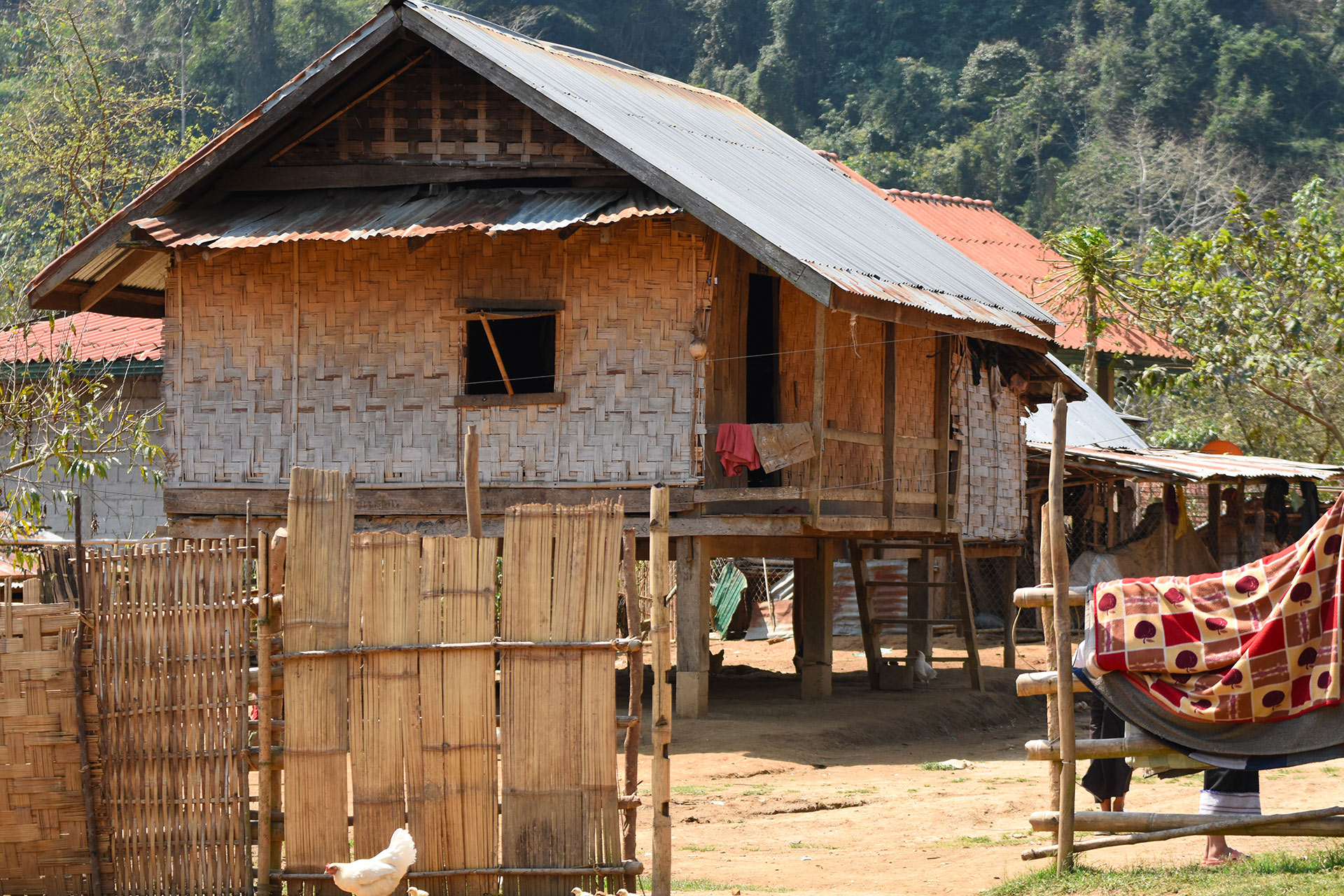
Fragments of worlds
My Fragment of Laos
Laos: The Cinderella of Indochina
Laos: The Cinderella of Indochina
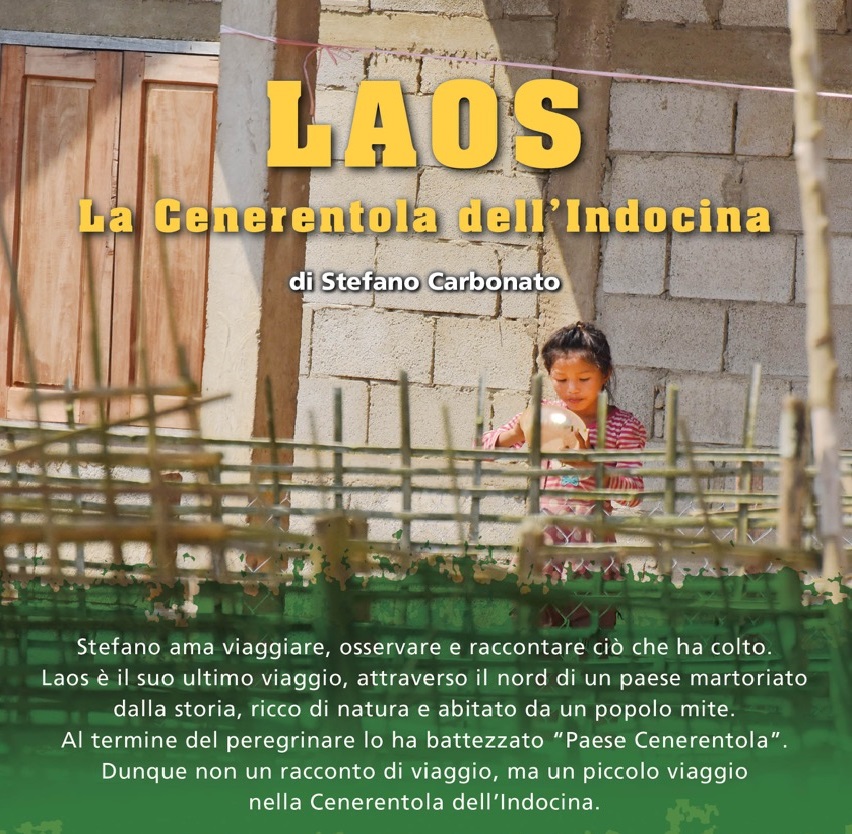



Not a travel account but a little trip to Laos.
Introduction
In advertisements for tour operator, Laos is often named as “The hidden jewel of Indochina”

But on my trip I thought to name it “the Cinderella of Indochina”

and in this fragment of Laos I’m going to to explain why.
In summary, compared to its neighbors, the Cinderella Laos is the only country of Indochina Peninsula that has no outlet on the sea.

It is the poorest and least developed country in the area and depends heavily on assistance from foreign countries.
Historically it has never been a dominant power and its recent history has been heavily influenced by events occurred in one of its more powerful neighbors: Vietnam.
We have all heard of what went down in history as the Vietnam War, but perhaps not everyone knows that during that war, Laos was secretly but heavily bombed, to the point that Laos is defined as the “most bombed country in history”.
Today Laos is a peaceful country and its inhabitants are mild and friendly and you can travel trough it without any particular danger. Compared to Thailand there is no evident prostitution; just for fighting prostitution, in Laos sexual relations between foreigners and Laotian women outside of marriage are prohibited by law.
This map outlines the topics of my “Fragment of Laos”

Not a travel story, but a small trip to Laos, seen through my eyes of traveler from many points of view as result of my personal travel experience.
History
The first settlements in Laos date back to 50 thousand years ago. However, the first significant kingdom we know is the Lan Xang (Kingdom of a million elephants), dated 1350.
With its cpital before in Luang Prabang and then Vientiane, under the reign of Lan Xang, Laos experienced the heyday of its history for about four centuries during which it was able to compete with the other hegemonic powers at the time: Burma and Siam ( today’s Thailand).
Precisely during this period Buddhism arrived from Thailand and the wonderful temples, that travelers admire today in Luang Prabang and Vientiane, were erected.
For example the Pha That Luang of Vientiane, a stupa dating back to 1500, the current monument symbol of Laos.

The decline of the one million elephants reign began around 1750 when, because of in-fighting, the kingdom was divided into three weak princedoms which were easily conquered by Siam.
When after the mid-1800s French colonizers invaded Indochina, Siam was the dominant power in the area and was the only country in the area that didn’t become colonized, as you can see from this map of colonized Indochina by French and British.

However, to keep independence, Siam surrendered Laos to the French, which thus became part of the French colonial empire.
The turning point for independence was 1954 with the battle of Dien Bien Phu, a border town in northern Vietnam, as you can see on the map below.

The battle, fought and won by the Vietnamese against the French, marked the end of the French colonial empire in Indochina and therefore also determined the independence of Cinderella Laos.
On my travel I crossed the border between Laos and Vietnam and went to Dien Bien Phu, discovering a town strongly connected to the memory of that battle which represents a reason of national pride.
The main attraction points celebrate the victory over the French.
For example, the site that went down in history as A1 hill, at that time French stationing, was one of the theaters of the bloody battle. There today are recreated scenes of the fighting and numerous war relics are exposed.


Or the victory monument that stands on a hill in the city center and it is accessible by an imposing staircase

Immediately after Dien Bien Phu, US and Communist Party replaced the colonial powers, and began fighting each other for the control of Indochina; political balance and peace in the area were sanctioned by the Geneva conference (1954), which established the independence and political neutrality of Laos and the division of Vietnam into North and South Vietnam; the north under control of the communists, the south ruled by an American protectorate, thus creating the conditions for the Vietnam War 10 years later.
Laos became independent and neutral with the name of “Kingdom of Laos” in which, however, coexisted and opposed each other two factions: the Pathet Lao, a Marxist-inspired movement that aimed to create a communist state, and the government of Kingdom of Laos, supported and financied by United States in an anti-communist key.
In the image below, Kingdom of Laos flag, which recalls the ancient land of one million elephants, counterpose to the tricolor of the Pathet Lao.

This contrast generated a bloody civil war, fully underway at the time of the outbreak of Vietnam War.
During the Vietnam War, Pathet Lao was particularly active in the north east area of the country, close to Vietnam; moreover the famous Ho Chi Minh trail along which the Vietcong allowed men, armaments and supplies to pass from northern to southern Vietnam, also passed through Laotian territory.

For this reason the Americans decided to bomb Laos secretly, giving rise to what went down in history as the secret war.
Secret because Laos had been declared neutral and therefore could not be officially attacked. So at the time American people did not know that their government was bombing Laos massively.
The image below shows a map of the bombed areas of Laos.

The bombings were so intense that Laos is defined the most bombed country in history.
Entire villages were razed to the ground; for example the town in the photo, Nong Khiaw, is the post-war reconstruction of a town originally located about 5 km further upstream along the Nam Ou river.

Were also bombed villages like this below where, as far as I could see by visiting them, at that time people probably thought about how to get food and knew little or nothing about communism or capitalism.

In Laos, as in Vietnam, the problem of unexploded military devices still exists and their presence is also reported along some tourist routes as the one in the photo below; many war relics have been recovered and are now exhibited or used as furnishing elements.

During the bombings, population and members of Pathet Lao refuged in caves within limestone massifs. The most famous are those of Vieng Xai. I visited the Nong Khiaw ones, fearing to lose myself because they are still today without enlightenment and signals. Visit them with a guide!
Geography
Laos is located on the Indochinese peninsula and, as you can see from the political map, it is the only country in the area that has not outlet on the sea.

The northern area, the one I visited, is mountainous with winding roads, while the southern area is more flat and accessible.

The Annamite mountain range runs from north to south and marks an important territorial and cultural watershed with neighboring Vietnam. For example, Laotian writing is very different from Vietnamese.
The photo below, shows on the left a school notebook that a kid displayed me; it is written in Laotian characters, incomprehensible to a western traveler; on the right a poster written in Vietnamese which instead uses the Latin alphabet, imported into Vietnam by the Jesuits around 1600. Before then the Vietnamese that hadn’t an own writing had adopted the Chinese idiograms which, however, were unfit to represent some sounds of the Vietnamese language.
Religion is also different: west of the Annamites, the laotians are Buddhist, religion that came from India through Thailand, while east of the mountain range, Vietnam has been influenced by China therefore many Vietnamese are atheists or followers of Taoism or Confucius.
In the physical geography of Laos and of the whole Indochina, the dense river network has great importance, as it brings water and food to villages, makes the valleys fertile and is an important connecting network.
The most important river, symbol of the whole Indochina, is the Mekong, which rises in Tibet and flows almost 5000 km, crossing Indochina from North to South and forming the border of Laos with Myanmar first and then with Thailand.

It is the twelfth longest river in the world, but the second, after Amazon River for biodiversity. It is a fundamental means of transport and source of food for 60 million people, with 2.6 million tons / year of fish produced; its waters make the fields fertile, allowing the cultivation of rice. Not by chance the most important towns have developed in its fertile valley.
The sharp increase in electricity demand in South East Asia (60% in the last 15 years) has encouraged the development of projects for hydroelectric power use of the Mekong, with the construction of several dams along the whole path of the river. All this has resulted in tensions between the upstream countries, China in particular, which takes advantaged of the resource for energy purposes, and the downstream countries, such as Cambodia and Vietnam, which pay the price of the environmental impact of this exploitation, in terms of dryness and depletion of the fish resource.
Laos today
Following the victory of the Communists in the Vietnam War, also in the Cinderella Laos the Communist Party took power and it still now governs.
It is a Chinese-style communism, therefore open to the free market. Politically, however, there is no democracy in Laos.I’ve seen the Laos flag and the hammer and sickle flag waving side by side In the towns. But as far as I have seen, hammer and sickle disappear in the countryside and only the Laos flag remains.
By the way, Laos is the only communist country whose flag is not completely red. In the Laotian flag (which is that of the Communist Party Pathet Lao), red reminds of the blood shed for independence, blue the wellness of the nation, and the white ball, according to the most romantic interpretation, the moon rising over the Mekong.
Laos is one of the poorest countries in Asia. Its economy is based on agriculture, timber and hydroelectric power generation.
It is a country that lives on subsidies that are welcome and also shown with gratitude. As in the case of this school built with the contribution of Japan.
But the biggest investor is China, which finances great works. The major building sites I’ve seen all bear Chinese writing, like this one.
This dam under construction on the Nam Ou River also bears Chinese signs.
Laotians are a mixture of ethnicities; the main is the Lao Loum to which the inhabitants of the plains belong; in the north, among mountains live many other small ethnic groups, such as the Hmongs, to which belongs the woman in the photo.
In the north of the country the cultural diversity is so high that two of the villages that I have visited, distant from each other only a few hours by walking, belong to two different ethnic groups, with two different religions and two local languages, that a person who speaks only Laotian couldn’t understand.
Usually, society in Laos is based on the extended family model, but on a matriarchal basis. That is, when a couple gets married, goes to live in the bride’s family for a period of time; normally until a younger sister marries.
Despite this, women are always subordinate to men; for example, women of the main ethnic group (Lao Loum) can inherit the family properties, but the decisions about how manage them are taken by the man. Instead In the minor ethnic groups, usually women can’t inherit anything.
From cities to villages
I arrived in Vientiane having in my mind a chaotic Asian megalopolis but found a quiet town. The reason is very simple: Vientiane 200 thousand inhabitants compared to 8 million in Bangkok.
The Vientiane market suprised me for its quiteness: around the stalls, very few people compared to what I have seen elsewhere in the past.
Hairdressers for women find place among fruit and vegetable stalls.
The main cultural center, capital of the ancient Lan Xang kingdom, is Luang Prabang, 12 hours by bus north of Vientiane, that you can easily visit by bike.
To the south I point out Pakse, important hub for local transport.
But in Laos there are above all a lot of small villages; those which are located on the main connecting roads, are more developed; others, are more isolated and you can get them only by inaccessible roads: there, time seems to have stopped. Some villages, like this one that I visited, are without electricity, water and gas.
Traditional houses are made of wood and bamboo and are on stilts to separate them from the wet ground during the rainy season and to get rice under cover
For water there is the river

wood for the fire: fire for cooking is lit inside the houses, and the smoke comes out through the numerous cracks along the walls
per la luce ci sono le lampade ad olio o si va a dormire.
for the light there are oil lamps or you go to sleep.
In these villages there are no shops and the community lives on hunting and fishing, like these frogs caught in the river and skinned to separate the poisonous skin;
lives on gathering and small breedings of farmyard animals, such as chicks, wild boars, and even dogs;
finally, it lives on rice cultivation and small trade of products collected in the jungle and sold at the market in the nearest city.
And while adults dedicate themselves to these activities, children stay outdoors playing together, especially in the river, without the direct control of the adults.
… maybe after school, since in all villages I have seen there is the primary school, which often bears some international subsides signs.
There are then more developed villages, where electricity, satellite dish and even a couple of small shops appears.
Instead, the biggest and most developed villages overlook generally the main roads.
Finally, in the towns you find what you don’t expect: alongside the traditional houses, enviable modern villas rise, testifying to a remarkable social diversity.
Religion
Laos is above all a Buddhist country; this religion came from India through Thailand. It is actually a Buddhism adapted to Marxism so much that the monks have to attend Marxism courses.
During the war the communists got the support of the monks; however after the war they tried to eradicate this cult from the people by prohibiting it; but people rebelled and communists had to recede this project.
Laos therefore today has the peculiarity of being a communist and at the same time a deeply Buddhist country.
Buddhist temples contain images of Buddha and other recurring images, for example, the dragon and the elephant.
Another recurring element in Buddhist symbolism is the lotus flower, whose seed sprouts in the mud and rises to bloom on the water surface; it symbolizes the path of the spirit elevation.
Especially in the main towns it is easy to see the monks walking on the street, dressed with their characteristic saffron yellow tunic.
The monks seem to be imperturbable, detached from any passion. But if you stop them on the street to ask information, they are generally friendly, smile and answer you in English.
Most of monks are teenagers, or even kids. They are not generally people devoted to religious life, since in Laos to be a monk at least for a short time is considered a sort of social duty; so young people are called to become monks generally for a few months and then usually return to laical life.
Only men can become monks; this is because Buddhists believe that woman represents an intermediate incarnation stage from which is not allowed to access to Nirvana directly. Therefore only men can achieve enlightenment . Actually in Tibetan Buddhism women are admitted to monasticism; Instead, only men are allowed in Indochina.
Very special and suggestive is the Tak Bat ceremony that takes place in the towns: every day at the sun rise, monks walk in procession with baskets and collect alms (generally rice or food) from the community of the faithful.
In this way the community supports the monks, who reciprocate by praying and singing a blessing.
But it’s more than that: monks redistribute part of the offerings to the poor; for example I saw this little girl arriving with the empty bucket and leaving with the bucket full of rice.
Most tourists attend the Tak Bat in Luang Prabang, so that it has become a great touristic attraction, with frenzied tourists crowding among the monks and the faithful, taking close-up photos with flash in the face.
To see something more authentic just move away from the main street or, even better, see the same thing in one of the many smaller towns, where the ceremony takes place in the same way, but without tourists. For example in Muang Khua where I took this photo.
Buddhism is the main religion In Laos, but, especially in the northern regions inhabited by ethnic minorities, numerous other animist religions are widespread. They practice the worship of the spirits of the dead whose benevolence must be obtained.
Travel to Laos
Transports deserve a dedicated chapter because are astonishing and they can really put a strain on the traveler.
The photo above shows a small bus station. Bus is the most used transport by land. There is not the railway (but the Chinese are building the route from China to Bangkok via Laos).
The buses are really cheap and, on long-distance routes, ticket includes a drink on board and a meal in a bus station along the way.
Every main road I travelled was asphalted and in absolutely good condition.
But in mountainous regions roads are very tortuous. To give an example, along the route from Oudomxay to Nong Khiaw, of which you can see below a photo taken during a break along the way, at the beginning of the journey bags for bus sickness were distributed, and I assure you that many people made use of them.
Along these routes, speeds are necessarily reduced and travel times infinite.
Nevertheless I think traveling on the road represents the greatest threat to the traveler in Laos
Beacuse, since everyone goes slowly, overtaking is often carryed out in curve and if another vehicle comes out suddendly, both of them honk strongly to get the road free but noone brakes until the last second.
But the most peculiar thing, however, is the night journey on the sleeping bus because if you travel alone have to share the bed with whoever you meet.
The photo shows the sleeping bus that I took from Luang Prabang to Luang Namtha; beds number 13 and 14; in the bag there are my shoes; therefore you can guess that the two beds together are large as a normal single bed. So you have to sleep very close to whoever happens to you.
Instead in the urban areas, you can use these colorful tuk tuk for your transfer.
I was surprised by the large number of private SUV cars, like this one.
Finally there is a dense river transport network ranging from small boats to simple canoes.
And even this journeys can be long, crowded and exhausting, as I tested on the route from Nong Khiaw to Muang Khua.
Cuisine
The typical dish of Laotian cuisine is the noodles soup
Rice noodles are immersed in a broth where pieces of meat and vegetables float. To be honest, I didn’t find it very inviting.
Instead the dry version of the noodles, always mixed with meat, or fish and vegetables, is delicious.
Rice, in the form of noodles or grains, is omnipresent and accompanies all other dishes. They use a lot a rice variety called sticky rice because , according with his name, is really very sticky .
It is usually served piled up in small baskets from which you can detach a piece with your hands and eat it as if it were bread, dipping it in the other dishes.
Instead, If you prefer normal rice … ask for steam rice.
Spices are often added to dishes which are accompanied by rice and raw vegetables.
For breakfast the traveler will find delicious comfort in the pancake, a kind of crepe with a filling of your choice (very good with mango, banana, papaya …).
In the photo the pancake is accompanied by a good cup of coffee, whose tradition derives from French colonialism.
Actually these delights are appreciated above all by tourists; the Laotians indeed have breakfast with noodles soup.
I assure you that I had to struggle a lot before getting a delicious pancake for breakfast, thus avoiding the myriad of restaurants and stalls that at 8 a.m.were serving noodles at will for breakfast.
In small villages, on the other hand, you eat what you have fished, hunted or collected.
Like these river delicacies which were cleaned up with skill while I was taking the photo and then cooked.
Lastly, I cannot forget the national drink: the Beerlao, the Laotian beer; omnipresent and drunk by everybody; a real hit!
Click on the video to see the route of my travel to Laos.
In the final part I crossed into Vietnam, and took my flight back to home from Hanoi.
Below instead the day by day route of my trip from February to March 2018.
| 1 | sat | Milano – Vientiane |
| 2 | sun | Vientiane |
| 3 | mon | Vientiane |
| 4 | tue | Vientiane – Luang Prabang (12 ore) |
| 5 | wed | Luang Prabang – Luang Namtha (notturno 9 ore) |
| 6 | thu | Luang Namtha |
| 7 | fri | Trek riserva Nam Ha |
| 8 | sat | Trek riserva Nam Ha |
| 9 | sun | Trek riserva Nam Ha |
| 10 | mon | Luang Namtha – Oudomxai (3 ore) |
| 11 | tue | Oudomxai – Nong Khiaw (4 ore) |
| 12 | wed | Nong Khiaw |
| 13 | thu | Nong Khiaw |
| 14 | fri | Nong Khiaw – Muang khua (7 ore fiume) |
| 15 | sat | Muang khua – Dien Bien Phu (7 ore) |
| 16 | sun | Dien Bien Phu – Haiphong (15 ore notturno) |
| 17 | mon | Haiphong – Isola Cat Ba (battello) |
| 18 | tue | Isola cat ba |
| 18 | wed | Isola cat ba |
| 20 | thu | Isola cat Ba – Hanoi |
| 21 | fri | Hanoi |
| 22 | sat | Hanoi |
| 23 | sun | Hanoi – volo |
| 24 | mon | Milano |





